Why do the leaves of indoor plants turn yellow?

Houseplants are the same pets as everyone's favorite hamsters, dogs, fish, turtles, cats. They also require increased attention and care, but if a starving puppy whines and whines plaintively at the feet of the owner, then the flower deprived of water and nutrients will simply fade.
We will try to find out why the leaves of house plants turn yellow and what needs to be done to return a healthy look to your flower.

Causes of yellowing
Factors that cause yellowness of indoor plants great variety:
- uncomfortable conditions of detention;
- infectious diseases;
- actions of pests.

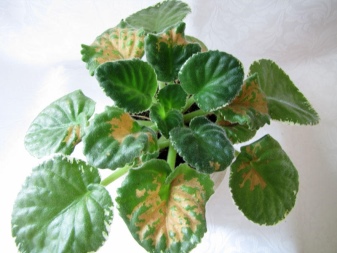
In the overwhelming majority of cases, care errors are the cause of severe yellowing of the leaves.
- Lack of light - in this case, the leaf plates do not become saturated yellow, but, rather, simply turn pale. A simple move of the pet to a brighter place can help in this situation.
- Direct UV action - plants require light, but diffused. Direct radiation can be extremely dangerous for green tissues, as noticeable burns appear on the leaf plates. They look like blurry yellow spots on the surface, and they appear mainly from the side of the window.
- Draft - Most indoor plants react to wind, cold air currents have the most adverse effect on them, causing stunted growth and yellowing.
- Temperature fluctuations - no less destructive for green pets are temperature drops in the house. Try to keep your plants away from them.
- Interaction with cold surfaces - usually flowers encounter a similar problem in winter when leaves come into contact with frozen window panes. In this case, they turn yellow, and then gradually begin to rot and completely die off.
- Overly bulky container - when the root system does not fill the container completely, moisture begins to stagnate where there are no roots. This provokes a sharp surge in the growth of fungus and mold, causes the appearance of all kinds of rot, which lead to the death of the roots. As a result, the aboveground part lacks water and nutrients, and the plant dries up.
- Pot too small - the other extreme, no less dangerous for plants that are grown at home. If there is not enough land, then they will have nowhere to take useful trace elements, so the pot must always be selected according to the size of the root system: no more, no less.
- Poor drainage - in the absence of a drainage layer and holes in the container, moisture stagnation also appears, an effective solution to the problem will be to transplant the plant into another container.
- Incorrectly selected soil - many novice growers plant all houseplants in the same substrate. This is the wrong approach, as all green pets have their own individual preferences. In addition, too dense clayey soils and soil poor in mineral substances often lead to yellowing of leaf plates.
- Air is too dry - Exotic plants from the tropics are especially affected by low humidity. To neutralize the situation, it is necessary to purchase an air humidifier, put an indoor fountain near the flower, or fill the tray with moss, keeping it wet.
- Sometimes the leaves turn yellow before the culture goes into a dormant stage, for example, cyclamen. This is a completely natural phenomenon - with the onset of spring, the flowers will again grow green mass.
- Violation of irrigation regime - for indoor plants, both excessive watering and moisture deficit in the soil are equally destructive. In the first case, the roots rot, and in the second, they dry out. In any situation, they cease to cope with the flow of water and mineral elements into the terrestrial parts.
- If only the tips of the sheet plates dry out, then, most likely, you irrigate them with hard, unsettled water directly from the tap.
- And of course, lack of feeding also worsens the condition of the flower, although an overabundance of them often leads to a chemical burn, which will no longer be cured.
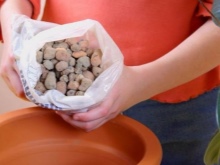
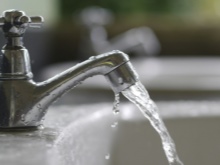
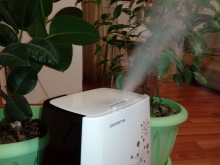
The cause of the yellowing of the sheets is quite often infection with a fungus.
- Fusarium - this disease occurs with constant waterlogging and leads to the gradual death of the roots.
- Late blight - the disease leads to the rapid wilting of leaves, buds and young shoots.
- Anthracnose - this pathology most often attacks indoor flowers with a lignified stem. In this case, the fungi quickly spread throughout the plant and cause the appearance of yellowish spots. Over time, they increase in size, merge and change their shade to brown.
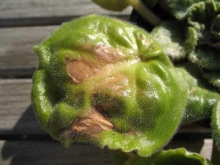
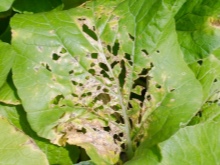
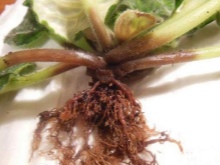
Sometimes the leaves dry up when the parasites suck the vital juices out of them. Houseplants often attract pests such as thrips, aphids, and spider mites.
- Thrips - signs of their appearance are yellowing of the leaf plates and the appearance of a silvery plaque. The pests themselves are usually visible on the back near the leaf veins.
- Aphid - these pests graze in whole colonies, so they can be seen with the naked eye. Insects literally stick around the leaf plates and young shoots of the plant and lead to its rapid death.
- Spider mite - is too small, so it is difficult to notice it. But to guess about the appearance of the parasite will help a thin whitish web, which literally entangles the leaves that have begun to turn yellow.

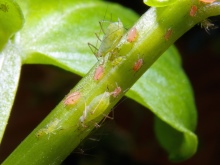
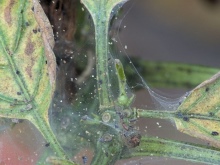
How to deal with the problem?
To cure a diseased plant, it is first of all important to determine the source of the problem. If the reason is uncomfortable conditions of detention, you just need to change the care regimen for the green pet.
If there is a lack of light, it is necessary to put the flower on the illuminated place, if the roots decay, remove all damaged fragments, transplant your flower into a fresh substrate and adjust the irrigation regime, and if there is a deficiency of nutrient minerals, feed your green pet.
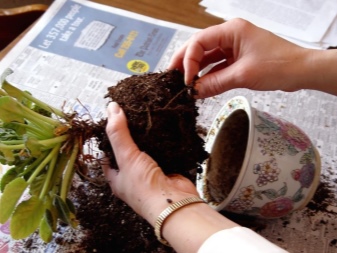
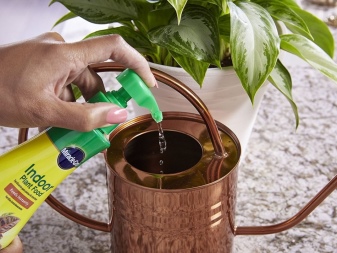
In order to get rid of the fungus, it is necessary to move the plant as far as possible from the rest of the flowers and treat it with fungicides. Typically, about 3 treatments are required with a frequency of 7-10 days. It is best to deal with such pathologies with the formulations "Gamair", "Agat", "Abit", "Trichodermin", "Fitosporin", as well as Bordeaux liquid.
Fungal diseases are quite common among indoor plants., most often, with timely treatment, they can be defeated. Less often, but green pets are faced with viral pathologies - they cannot be cured. The only thing left for flower growers is to destroy the flower.
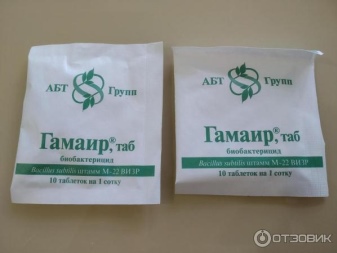

If the plant is affected by insect pests, then the first step is to remove the pest itself. Usually, for this, they are passed over the surface of the leaf plates with a sponge dipped in a solution of laundry soap or tobacco infusion. After that, the yellowed plant is sprayed with any systemic insecticide.
If the root system is damaged by insects, it is necessary to dig up the flower, clean it from the ground, rinse the roots, soak in a weak solution of potassium permanganate and transplant it into another soil, it is best to replace the pot as well.
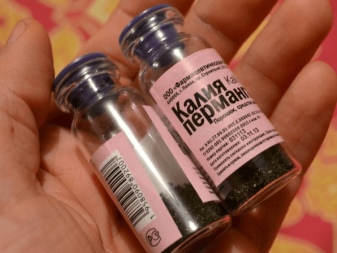
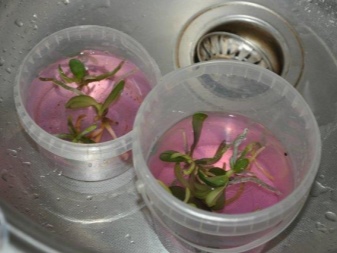
The complexity of the fight against any pests lies in the fact that they multiply very quickly, on each plant there are always several colonies of insects at the same time. In an adult state, it is rather difficult to destroy them, therefore several treatments are usually required, as a rule, at least three.
Preventive measures
So that the yellowing of the leaves of your beloved green pet does not cause death, he should be provided with suitable conditions of detention.
- Water the plant only after the clod is completely dry, otherwise you will create a microenvironment favorable for fungal microorganisms. At the same time, one should not forget that most plants, especially exotic ones, react negatively even to a short-term lack of moisture.
- Every two weeks it is necessary to give the plant fertilizer, but top dressing should be dosed - it is always better to slightly underfeed the flower than to overfeed it.
- Provide your plants with bright, but diffused lighting. Flowers have no place in the sun, especially in hot summers. In winter, artificial lighting will be required, it is best to use a phytolamp for this. However, the usual fluorescent one will also work. Daylight hours should be at least 10-12 hours.
- Protect your pet from drafts.
- Loosen the soil regularly to provide oxygen to the roots.
- Transplant the plant in a timely manner into a nutrient medium and a pot of suitable volume.
- Once a month, prophylactically spray the leaves of the flower with a solution of "Fitosporin" to prevent fungal infections.
- Destroy pests in a timely manner.
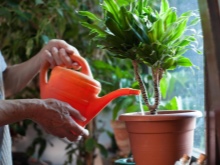

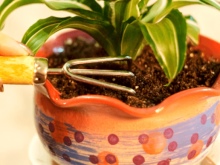
When a houseplant is kept in favorable and suitable conditions for it, its leaf plates will not begin to become covered with yellow spots and fall off. If such a problem could not be avoided, do not be discouraged, in the overwhelming majority of cases, with the timely elimination of unfavorable factors, the growth and development of culture are restored.
About why the tips of the leaves of indoor plants turn yellow and how to deal with it, see the video below.































The comment was sent successfully.